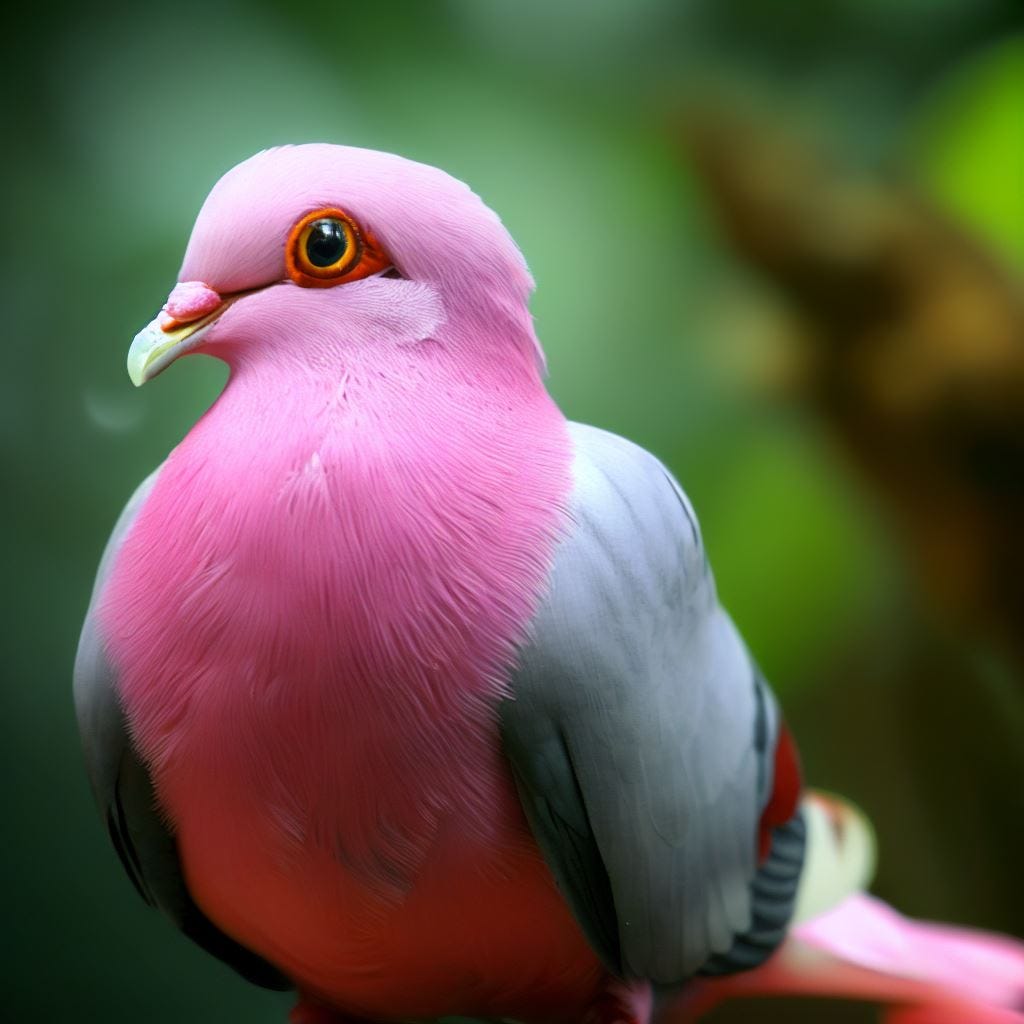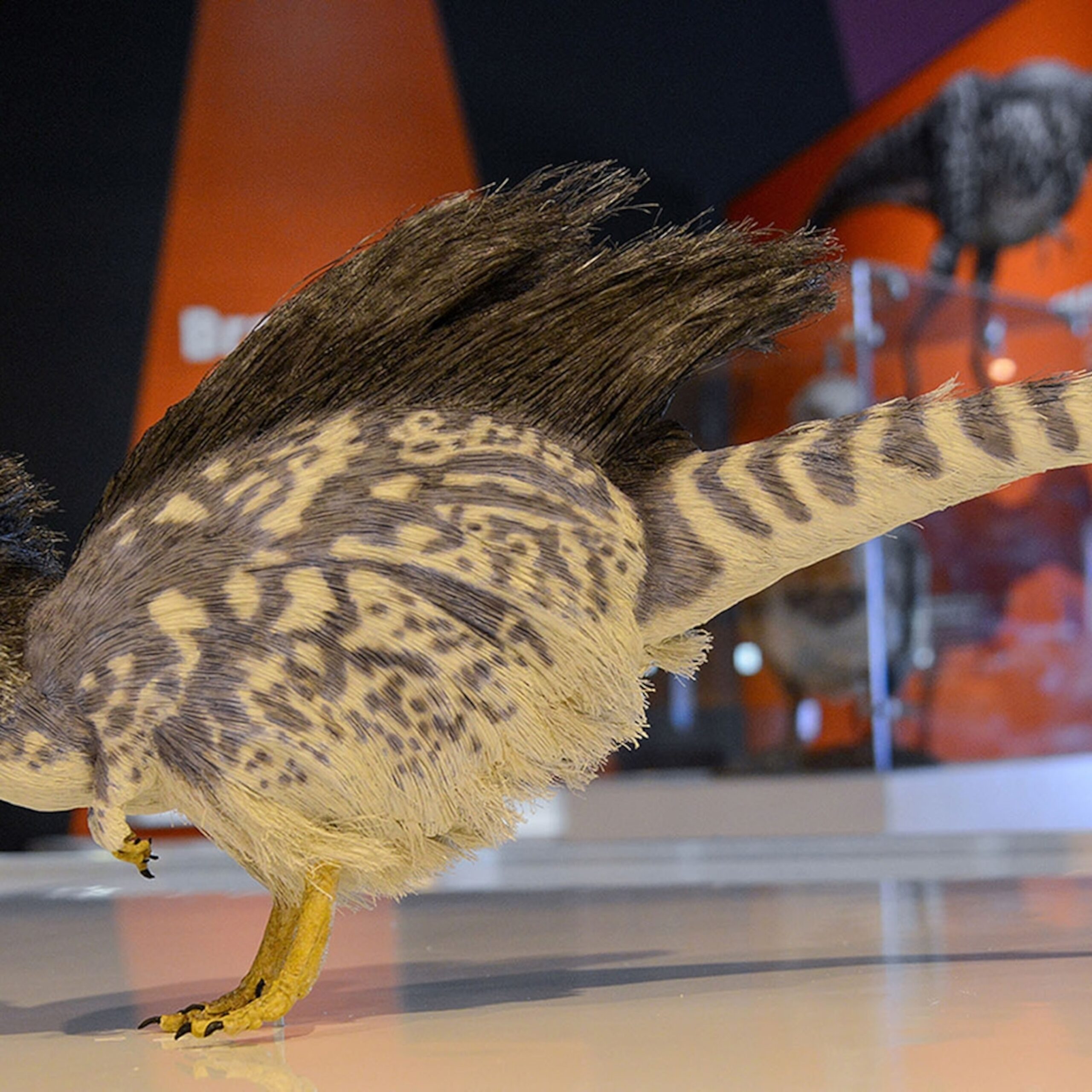Colour Pigeons are a variety of pigeons that exhibit vibrant hues in their feathers. These pigeons are bred for their unique and striking colors, which can range from vivid blues and purples to bright yellows and oranges.
The popularity of colour pigeons has grown as they are seen as beautiful and captivating birds. With their eye-catching plumage, these pigeons are often kept as pets or showcased in pigeon shows and exhibitions. Their vibrant colors are a result of selective breeding over generations, and different breeds of colour pigeons can have specific color patterns and variations.
Colour pigeons are admired for their aesthetic appeal and are enjoyed by bird lovers and enthusiasts worldwide.
The Evolution Of Colourful Pigeons: From Natural Selection To Selective Breeding
Colourful pigeons have undergone a fascinating transformation, evolving from natural selection to selective breeding. Through this process, these birds have developed vibrant plumage that captivates and delights. This article explores the captivating journey of colour pigeons and how they have evolved into the stunning creatures we see today.
Natural Selection And The Role Of Camouflage In Pigeons
One of the fascinating aspects of the evolution of pigeons is the role of natural selection in shaping their plumage. In the wild, pigeons have developed diverse colors and patterns that enable them to blend into their surroundings and protect themselves from predators. This process of natural selection, driven by the need for survival, has played a significant role in the development of pigeon plumage.
Camouflage is a key component in the evolution of pigeons, as it allows them to hide from predators and increases their chances of survival. Pigeons with colors and patterns that closely match their environment have a distinct advantage over those that stand out. Through generations, pigeons with effective camouflage have been more likely to survive and reproduce, passing on their advantageous traits to their offspring. This gradual and slow process of natural selection has shaped the appearance of pigeons over time.
The Influence Of Selective Breeding On Pigeon Plumage
While natural selection has played a major role in the evolution of pigeon plumage, humans have also had a significant impact on the colorful varieties we see today. Selective breeding, a practice carried out by humans for centuries, has allowed for the intentional breeding of pigeons with specific colors and patterns.
Through careful selection of parent birds with desired traits, humans have been able to create a wide range of stunningly beautiful pigeons. Whether it’s vibrant reds, striking blues, or intricate patterns, selective breeding has provided opportunities to enhance the aesthetic appeal of pigeons. This intentional breeding process focuses on selecting individuals with the desired traits and allowing them to reproduce, ultimately leading to the development of new pigeon breeds with unique appearances.
Today, there is a vast array of pigeon breeds with remarkable color variations, thanks to the continued practice of selective breeding. From the iridescent feathers of the Fantail pigeon to the bright hues of the Indian Fantail, selective breeding has expanded the possibilities of pigeon plumage and allowed for the creation of captivating visual displays.

Credit: medium.com
A Rainbow Of Colours: The Astonishing Varieties Of Colourful Pigeons
Discover the astonishing array of colourful pigeons, showcasing a vibrant rainbow of hues. From vivid blues to fiery reds, these pigeons captivate with their stunning and diverse colours. Indulge in the mesmerizing beauty of these feathered creatures.
The Vibrant Palette Of Pigeon Feathers
When it comes to the world of birds, pigeons may not be the first species that come to mind for their vibrant colors. However, believe it or not, pigeons come in a stunning array of shades and patterns, making them a true marvel to behold. From soft pastels to bold and vibrant hues, these pigeons bring a whole new meaning to the phrase “a splash of color.”
Every pigeon species has its own unique color variations, transforming them into living works of art. These beautiful birds showcase an extraordinary range of colors, including but not limited to shades of red, orange, yellow, green, blue, indigo, and purple, all blending together in mesmerizing patterns on their feathers.
Whether you’re a bird enthusiast or simply appreciate the beauty in nature, these colorful pigeons are sure to captivate your imagination and leave you in awe.
Spectacular Pigeon Breeds From Around The World
Across different continents and countries, various pigeon breeds have emerged, each with its own stunning color palette. Let’s take a closer look at some of the most extravagant breeds found around the world:
Australian Crested Pigeon
The Australian Crested Pigeon boasts a unique combination of soft pastel colors. Its body is covered in shades of gray, while its crest features a vibrant mix of pink, purple, and green.
Indian Fantail
The Indian Fantail, hailing from India, showcases a beautiful array of colors. Its feathers exhibit captivating shades of blue, white, and gray, giving it an ethereal appearance.
Pakistani Highflyer
The Pakistani Highflyer, as the name suggests, is known for its impressive flying skills. However, it also makes a striking visual impact with its feathers, which come in shades of white, black, and rich brown.
German Owl
The German Owl pigeon has a remarkable appearance, with feathers that vary in hues of silver, black, and white. Its unique coloration adds an extra touch of elegance to the breed.
Unraveling The Genetics Behind Pigeon Plumage Diversity
Have you ever wondered how pigeons come to possess such a wide range of colors? The answer lies in the underlying genetics that dictate their plumage diversity.
Scientists have been diving into the world of pigeon genetics to unravel the complex mechanisms behind the astonishing variety of colors. It turns out that various genes interact to produce the vibrant pigments that color a pigeon’s feathers.
For instance, the melanin gene plays a significant role in determining the intensity of black, brown, and gray colors, while other genes control the production of red, yellow, and other pigments.
By studying the genetics of these birds, researchers gain a deeper understanding of the fascinating biological processes that give rise to the mesmerizing plumage of pigeons.
In conclusion, the world of pigeons is a vibrant one, filled with an incredible spectrum of colors. From the soft hues of the Australian Crested Pigeon to the bold and striking patterns of the German Owl, these colorful birds never fail to amaze. Thanks to ongoing genetic research, we continue to unlock the mysteries behind their captivating plumage, further enhancing our appreciation for the natural world’s endless wonders.
The Significance Of Plumage In Visual Communication And Attraction
Colourful plumage in pigeons serves as a captivating display that plays a crucial role in attracting mates and conveying messages in their social interactions. These stunning feather patterns, shades, and hues are not just aesthetically pleasing, but also serve important evolutionary purposes. In this blog post, we will explore the connection between pigeon plumage and courtship displays, the influence of colourful plumage on mate choice, and the evolutionary advantage of vibrant feathers.
Pigeon Plumage And Courtship Displays
When it comes to courtship, pigeons utilize their plumage as a means of communication. Male pigeons engage in elaborate displays, showcasing their vibrant feathers to attract potential mates. These displays often involve puffing up their chests, fanning their tail feathers, and strutting in a graceful manner. The intricate combination of colours, patterns, and movements creates a visually striking spectacle that catches the attention of nearby females.
The Connection Between Colourful Plumage And Mate Choice
Colourful plumage plays a significant role in mate choice among pigeons. Research has shown that female pigeons tend to prefer males with more extravagant feathers, perceiving them as healthier and more genetically fit. The vividness and symmetry of plumage signal the male’s ability to acquire high-quality food and resist parasites, making them desirable partners. In essence, colourful plumage acts as a visual advertisement for the male’s genetic quality, ultimately influencing the female’s choice of a suitable mate.
The Evolutionary Advantage Of Vibrant Feathers
The evolutionary significance of vibrant plumage in pigeons lies in its ability to enhance individual reproductive success. Through natural selection, the display of colourful feathers has become a favorable trait, as it increases the chances of successful mating. The prominent plumage attracts mates, increasing opportunities for individuals to reproduce and pass on their genes. Moreover, bright colours can also serve as a form of competition between males, establishing hierarchical dominance and ensuring optimal access to mates.
Overall, the captivating plumage of pigeons serves as a powerful tool for visual communication and attraction. From courtship displays to mate choice, the significance of vibrant feathers in pigeons cannot be overlooked. The intricate patterns and shades are not only eye-catching but also provide valuable insight into the genetic quality and reproductive potential of these fascinating birds.
Conservation Efforts: Protecting Colourful Pigeons From Extinction
Colourful pigeons, with their vibrant plumage and unique patterns, are a captivating and cherished part of our natural world. However, these beautiful birds are facing serious threats to their survival, making conservation efforts crucial in order to protect them from extinction. In this article, we will explore the various challenges these pigeon breeds face, the initiatives and organizations dedicated to preserving their diversity, and the vital role that captive breeding programs play in preventing their extinction.
Threats To The Survival Of Colourful Pigeon Breeds
Colourful pigeon breeds, like any other species, are not exempt from the challenges that arise in their natural habitats. Several factors contribute to the dwindling population of these remarkable birds:
- Habitat loss due to urbanization and deforestation
- Illegal hunting and poaching
- Predation from invasive species
- Decrease in available food sources
Initiatives And Organizations Dedicated To Preserving Pigeon Diversity
Thankfully, various initiatives and organizations worldwide understand the importance of preserving the diversity of colourful pigeons. They work tirelessly to ensure these birds can thrive in their natural environments. Some of these initiatives and organizations include:
- The Pigeon Conservation Alliance: This organization focuses on research, education, and conservation efforts to protect and restore pigeon populations.
- The Pigeon Preservation Society: Committed to the conservation of all pigeon breeds, this society promotes breeding programs and advocates for the protection of pigeon habitats.
- Local governments and wildlife conservation authorities: Many countries have established legislation and regulations to safeguard the habitats and populations of colourful pigeons.
The Role Of Captive Breeding Programs In Preventing Extinction
In order to prevent the extinction of colourful pigeons, captive breeding programs have emerged as a crucial conservation tool. These programs involve breeding the endangered pigeon breeds in controlled environments, such as aviaries or dedicated facilities. By strategically pairing compatible individuals, these programs aim to maintain healthy gene pools and increase the population size of the threatened species.
Through careful monitoring and scientific intervention, captive breeding programs have successfully saved several colourful pigeon breeds from extinction. Once the population has sufficiently recovered, these bred birds are often reintroduced into their natural habitats to bolster existing populations.
The active involvement of zoos, bird sanctuaries, and conservation organizations is essential in conducting these breeding programs. Not only do they provide a safe and suitable environment for the pigeons to thrive, but they also collaborate with researchers to improve breeding techniques and genetic management.
Overall, the concerted efforts of initiatives, organizations, and captive breeding programs play a vital role in protecting colourful pigeons and ensuring their survival for future generations to appreciate.
The Fascination And Cultural Impact Of Colourful Pigeons
Colourful pigeons have a deep fascination and significant cultural impact. Their vibrant plumage captivates attention and adds vibrancy to landscapes, making them a source of awe and inspiration. These unique birds reflect the beauty and diversity of nature, enthralling both bird enthusiasts and casual observers alike.
Colourful pigeons have long captivated people’s imagination and left an indelible mark on various aspects of human culture. From their historical and cultural significance to their portrayal in art, literature, and symbolism, these vibrant birds have become ingrained in our society. Additionally, in modern times, colourful pigeons continue to hold immense appeal, inspiring admiration and fascination. Let’s delve into the compelling world of colourful pigeons and explore the ways they have impacted our culture.
The Historical And Cultural Significance Of Colourful Pigeons
Throughout history, colourful pigeons have held a special place in numerous cultures around the world. In ancient Egypt, they were cherished as sacred symbols of divinity and grace. Their vibrant plumage was believed to represent the heavens, while their peaceful nature represented harmony. In ancient Persia, pigeons were regarded as symbols of love and beauty, and breeding different colour variations was a common practice among nobles and royalty.
In more recent times, colourful pigeons played a significant role during times of warfare. Messenger pigeons proved instrumental in relaying important information during both World Wars, saving countless lives. The sight of a colourful pigeon soaring through the sky became a reassuring symbol of hope and communication.
Pigeons In Art, Literature, And Symbolism
Colourful pigeons have made their way into the realms of art, literature, and symbolism, leaving profound impressions on these creative domains. In art, their vibrant plumage has been captured by artists across different periods, adding bursts of color to paintings and sculptures. From Renaissance masterpieces to contemporary works, pigeons have symbolized peace, freedom, and natural beauty.
Literature, too, has embraced the enigmatic allure of colourful pigeons. These birds often take center stage in poetry and prose, appearing as symbols of love, longing, and transformation. Their graceful flight and striking colors provide poetic inspiration, bridging the gap between the human and natural worlds.
The Appeal Of Colourful Pigeons In Modern Society
Today, colourful pigeons continue to captivate and enchant people from all walks of life. They stand as a testament to the diversity and beauty found in nature. In an increasingly technology-driven world, the vibrant hues of these birds offer a much-needed respite, reminding us of the awe-inspiring wonders that surround us.
In modern society, colourful pigeons have also gained popularity in breeding communities. Enthusiasts dedicate their time to breed and showcase pigeons with unique and eye-catching colors. This growing interest in vibrant pigeon variations has created a dedicated community of collectors, breeders, and exhibitors who celebrate and promote the exotic, often mesmerizing, plumage of these birds.
Whether it’s their historical significance, artistic presence, or their appeal to modern sensibilities, colourful pigeons continue to leave an indelible cultural impact. In a world that can often feel mundane, these radiant birds serve as a reminder of the extraordinary beauty that exists all around us.
Frequently Asked Questions For Colour Pigeons
What Are The Colors Of Pigeons?
Pigeons come in various colors, including white, grey, black, brown, and combinations of these shades. They can also have patterns like speckles or bars on their feathers.
What Is The Rarest Pigeon Color?
The rarest pigeon color is the fantail pigeon’s lavender variety, a blend of blue and pink.
Which Is The Colourful Pigeon In The World?
The Nicobar pigeon is the most colorful pigeon in the world, with vibrant feathers in shades of green, blue, and purple. Its striking appearance makes it a favorite among bird enthusiasts.
Is A Black Pigeon Rare?
Yes, black pigeons are rare. They are not as common as other colored pigeons.
Conclusion
Colourful pigeons are a fascinating phenomenon, showcasing the incredible diversity in nature. Their vibrant plumage not only brings joy to birdwatchers and enthusiasts but also serves important ecological purposes. By attracting mates and navigating their surroundings, these colourful birds ensure their survival and contribute to the beauty of our natural world.
Discovering and appreciating the unique colours of pigeons opens up a whole new world of wonder and awe, reminding us of the endless wonders that nature has to offer.

Maruf, a true pigeon aficionado, finds solace and joy in the company of these graceful birds. His unwavering devotion to pigeons is a testament to his deep appreciation for their beauty and grace. Maruf’s passion for caring for and nurturing these feathered friends is truly inspiring to fellow bird enthusiasts.
